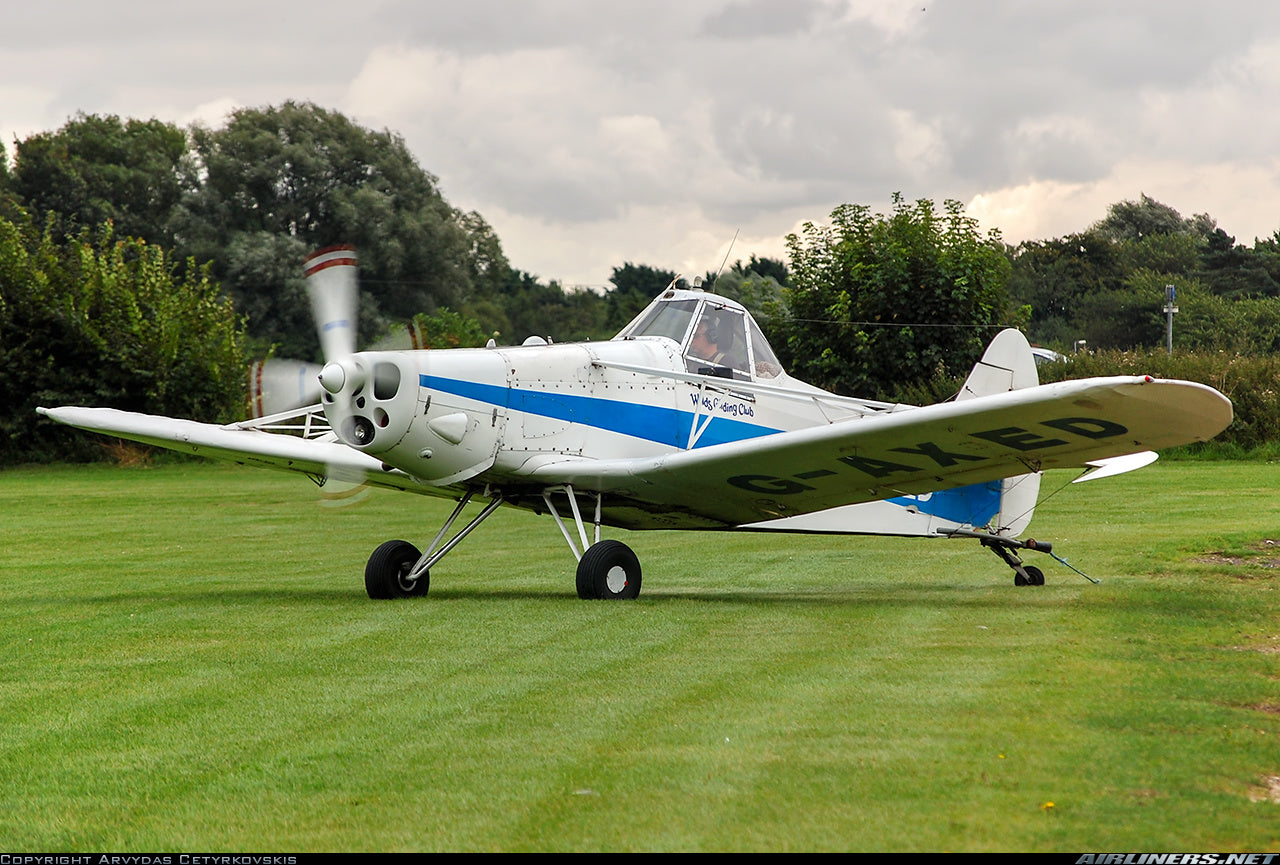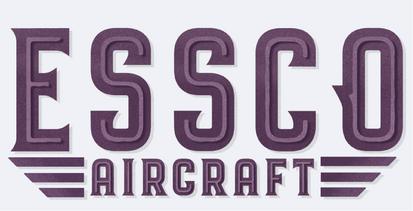
Number 54 of 100 in 100, the Piper PA-25 Pawnee 🛩️
Conceptualization:
The Piper PA-25 Pawnee came to life in the late 1950s, due to the growing need for a dedicated agricultural aircraft. At the time, crop-dusting was becoming more popular, but most of the planes used were general aviation aircraft that had been adapted for this role. Farmers and pilots needed something more rugged and specifically built for the job. That’s where Piper stepped in. They recognized the gap and created the Pawnee to be tough, easy to maintain, and able to handle the rough conditions and low-altitude flying that crop-dusting requires. The timing was perfect, too, as agriculture was booming in the U.S. and South America, and aerial spraying of pesticides and fertilizers was on the rise.
Original Design:
The design of the Pawnee was straightforward but purposeful, with its rugged steel frame and single-seat cockpit giving pilots excellent visibility for precision work. The large chemical hopper, positioned right in front of the cockpit for balance, could hold up to 800 pounds, so pilots didn’t need to make constant refills. Its low-wing design gave it the stability needed for low-speed passes over fields, and the conventional tailwheel landing gear made it ideal for the rough, often unimproved airstrips it typically operated from. Powered by a reliable Lycoming O-320 engine, it was built for reliability and the ability to keep going under tough conditions.

Photo Credit: airliners.net - Miroslav Bozovic
Principal Designer:
The man behind the Pawnee, Fred Weick, was an aeronautical engineer with a passion for practical, safety-focused aircraft design. He was originally approached as a consultant on creating an agricultural version of the Piper PA-18 Super Cub. His experience with agricultural aviation, especially from his time working on the AG-1 project, through Texas A&M University, made him the perfect person to lead the Pawnee’s development. Weick’s philosophy of designing aircraft that are simple to operate, maintain, and fly is evident in the Pawnee, and it helped solidify his legacy in both agricultural and general aviation.
Production Run:
The production run of the Pawnee began in 1959 and lasted until 1981, with 5,167 units built. Early on, the demand was strong, particularly in North and South America, as large farms and the rising popularity of crop-dusting drove sales. Piper introduced more powerful models over time, like the PA-25-235 in 1962 and the PA-25-260 in 1974, each one capable of carrying more chemicals and handling bigger jobs. However, by the late 1970s, competition from other agricultural aircraft and the increased use of ground-based spraying equipment led to a decline in demand. Even after production stopped, many Pawnees stayed in service, finding new life as glider tugs and in smaller agricultural operations.
Evolution:
As the Pawnee evolved, Piper focused on increasing its power and payload. The original 150-hp Lycoming O-320 engine model was ideal for small-scale tasks, but the introduction of the PA-25-235, with a 235-hp Lycoming O-540 engine, allowed it to carry more chemicals, making it much more efficient. By the time the PA-25-260 was released in the mid-1970s, the Pawnee had become a true agricultural workhorse. This 260-hp version was even better suited to large farms and could handle longer spraying sessions without needing to refill as often. Improvements to the spray systems also helped make the aircraft more precise in applying chemicals, which meant less waste and better results.

Photo Credit: airliners.net - Mick Bajcar
Specifications:
Piper PA-25-235 Pawnee B
General characteristics
- Crew: 1
- Capacity: 150 US gal (120 imp gal; 570 L) or 1,200 lb (540 kg) powder
- Length: 24 ft 7 in (7.49 m)
- Wingspan: 36 ft 2 in (11.02 m)
- Height: 7 ft 2 in (2.18 m)
- Wing area: 183 sq ft (17.0 m2)
- Aspect ratio: 7.15:1
- Airfoil: USA 35B (modified)
- Empty weight: 1,488 lb (675 kg)
- Max takeoff weight: 2,900 lb (1,315 kg)
- Fuel capacity: 40 US gal (33 imp gal; 150 L)
- Powerplant: 1 × Lycoming O-540-B2B5 air-cooled six-cylinder horizontally-opposed engine, 235 hp (175 kW)
- Propellers: 2-bladed McCauley 1A200/FA84 metal fixed-pitch propeller, 7 ft 0 in (2.13 m) diameter
Performance
- Maximum speed: 110 mph (180 km/h, 96 kn) at sea level
- Cruise speed: 100 mph (160 km/h, 87 kn) (75% power)
- Stall speed: 61 mph (98 km/h, 53 kn) (flaps down)
- Range: 300 mi (480 km, 260 nmi) (75% power, full fuel)
- Service ceiling: 13,000 ft (4,000 m)
- Rate of climb: 630 ft/min (3.2 m/s)
- Take-off run to 50 ft (15 m): 1,370 ft (420 m)
- Landing distance from 50 ft (15 m): 1,350 ft (410 m)
In Comparison to Other Aircraft in its Class:
When comparing the Piper PA-25 Pawnee to other agricultural aircraft in its class, several models stand out. The Cessna 188 Agwagon boasted a 230-hp Continental O-470 engine and a chemical hopper capable of carrying up to 200 US gallons, making it quite similar to the Pawnee. However, smaller farmers often preferred the Pawnee for its lower operational costs and simpler maintenance. The Grumman G-164 Ag Cat C/600, offered a Pratt & Whitney R-1340 radial engine with 600 hp and an agricultural hopper with a capacity of 500 US gallons, making it ideal for more demanding agricultural tasks. While its chemical capacity was larger than the Pawnee's, the Pawnee's simplicity still made it a favorite for smaller farms. Lastly, the Air Tractor AT-301, with a 450 hp engine and a useful load of 320 US gallons, was a heavy-duty option for large commercial farms, but its higher operational costs limited its appeal for smaller operators. Overall, while competitors like the Cessna and Air Tractor models offered greater power and capacity, the Pawnee remained popular for its reliability, ease of maintenance, and affordability, especially for small to mid-sized farms.
Performance:
Piper PA-25 Pawnee Performance Envelope (PA-25-260):
V-Speeds:
- V_NE (Never Exceed Speed): 136 mph (118 knots)
- V_NO (Maximum Structural Cruising Speed): 110 mph (96 knots)
- V_A (Maneuvering Speed): 96 mph (83 knots)
- V_FE (Maximum Flap Extension Speed): 86 mph (75 knots)
- V_SO (Stall Speed, Landing Configuration): 55 mph (48 knots)
- V_S1 (Stall Speed, Clean): 61 mph (53 knots)
G-Load Limitations:
- Positive G-Limit: +4.4 G
- Negative G-Limit: -1.76 G
Performance Assessment:
The Piper PA-25 Pawnee's performance is perfectly tailored for agricultural work, with its low stall speed of 55 mph and maneuvering speed of 96 mph making it ideal for precise, low-altitude spraying operations. It can handle tight turns and quick altitude changes with ease, thanks to its +4.4 G rating, which is essential for navigating obstacles and ensuring accurate chemical application. Its G-load capacity allows pilots to perform repeated high-stress maneuvers without concern. Additionally, the Pawnee's strong engine performance, particularly in the 260 hp version, makes it well-suited for glider towing, maintaining a steady speed even when handling heavy loads. Though it’s not built for speed, its rugged design and reliability make it a trusted option for individual transport in rural areas, expanding its utility beyond just agricultural use.

Photo Credit: airliners.net - Giorgio Varisco
Safety Record:
As for its safety record, like many agricultural aircraft, the Pawnee faced challenges typical of low-altitude operations. However, the aircraft itself was designed with safety in mind, with good cockpit shielding and ventilation to protect pilots from chemicals. While mechanical failures did occur, they were relatively rare, and most accidents were due to operational hazards or pilot fatigue. Compared to similar agricultural aircraft, the Pawnee held up well, and its overall safety record was consistent with its class.
Acquisition Cost:
The cost of acquiring a Pawnee has changed significantly over the years. When it was first introduced, a new PA-25 would set you back around $10,000 to $15,000. Today, a well-maintained used model can go for anywhere between $90,000 and $112,000, depending on its condition and modifications. Many of these aircraft have been restored or upgraded, especially for glider towing, which can push the price even higher. The fact that the Pawnee retains its value so well is a testament to its durability and ongoing usefulness in agricultural aviation.
Conclusion:
The Piper PA-25 Pawnee has earned its place as one of the most beloved agricultural aircraft ever produced. It was purpose-built for the demands of crop-dusting and has proven its value over decades of hard work. Even after production ended in 1981, its legacy continues, with many Pawnees still flying today, whether they’re spraying fields or towing gliders. The Pawnee’s simplicity, reliability, and ability to perform under tough conditions make it a lasting icon in the world of agricultural aviation.

Photo Credit: airliners.net - Mikael Stomberg
Bibliography:
Piper Aircraft Official Website
Federal Aviation Administration (FAA)
National Transportation Safety Board (NTSB)
Airliners.net - Piper PA-25 Pawnee
Wikipedia – Piper PA-25 Pawnee
Essco Links:
